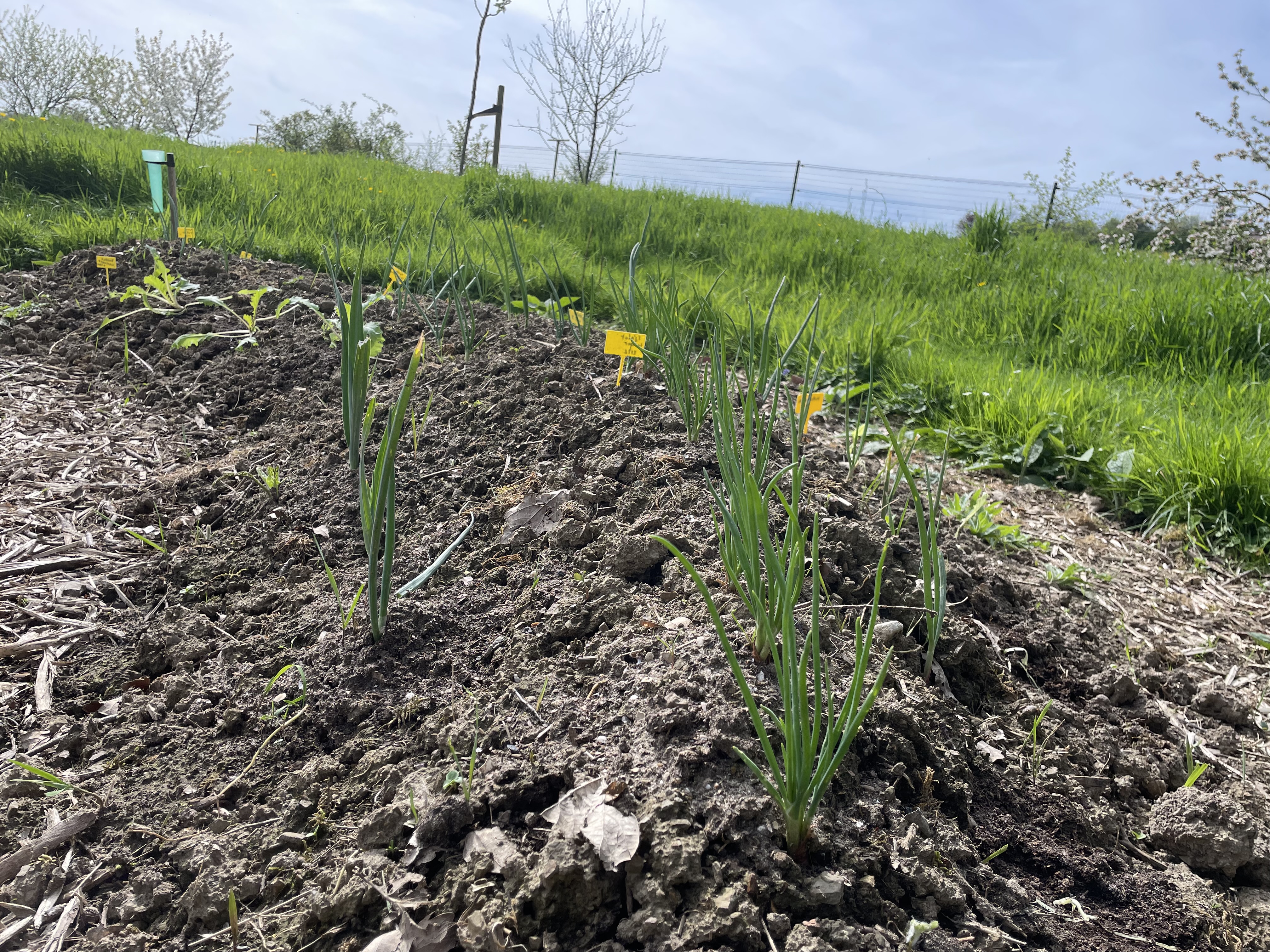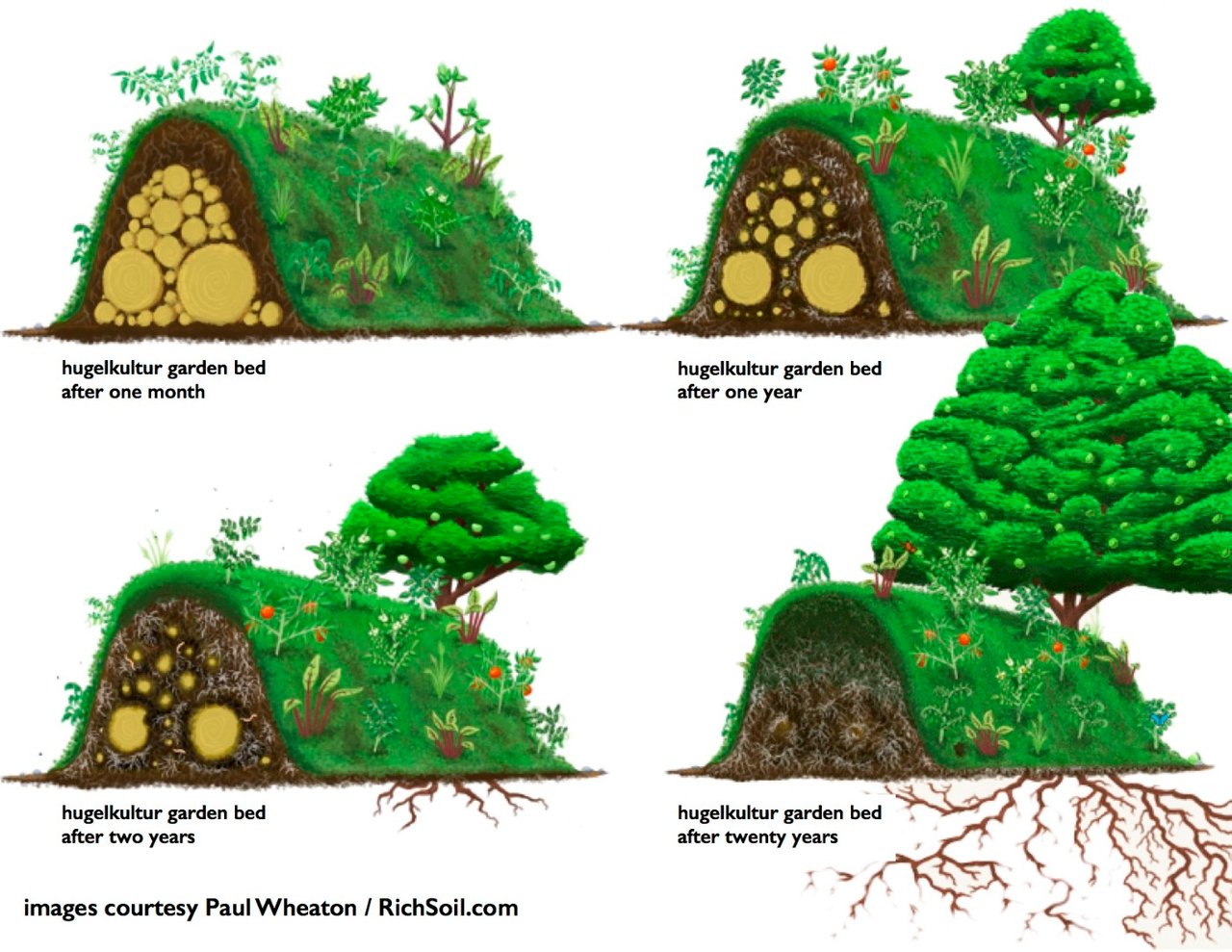
.jpg)

Creating your own hugelkultur mound bed
12/04/2024
My partner Frank is fascinated by the principles of permaculture, focusing on self-sustaining agricultural systems. The design works according to the principles of nature, creating a resilient (mini) ecosystem. It is a traditional biodynamic horticultural method, just like the aromatic spiral we explained in a previous blog. Today, we like to discuss mound beds, also known as hugelkultur.

The idea for a mound bed was alive already last year, but you need some volume of organic material to build it, so we gradually collected tree stumps, fine branches, sod, leaf litter, cut grass, compost,
cardboard without prints, and humus.
The hardest work is digging out the earth to about 40-50 cm depth over a length of about 7 metres and 1.0-1.2m wide. You can of course also make it larger. Within you pile all organic material from coarse to fine material and make sure it gets well filled and pound it. All this then breaks down very gradually, organically enriching the soil and attracting soil life. A mound bed also acts like a sponge. It retains moisture and makes it available to the plants. You thus create an airy nutrient medium for your vegetables. We placed the wooden bed on the south-west side of our vegetable garden to break the wind a little.

Then you can plant. Typical vegetables that thrive here are leeks, garlic, onions, carrots, radishes, but also pumpkins, courgettes, all kinds of lettuce and even tomatoes. Depending on the height of your mound bed, you also have a clear sunny and shady side to which you can then adjust your choice of crops exactly. You place the vegetables that prefer drier conditions at the top and those that prefer moist conditions at the bottom. Some make their mound bed bed up to 70-100 cm high, but it can be lower.
One of the challenges of a mound bed is obviously weed growth, because you let the system take its course. You can partially inhibit that by covering it with mulch. With a mound bed, you do combination cultivation anyway, a mix of crops. This means you have to learn to recognise the plants well and occasionally weed out the 'invaders', without this becoming an activity in itself.
Also curious how it will turn out? Be sure to keep an eye on our social media for more photos once everything starts growing. Meanwhile, we are dreaming of dishes with even more edibles straight from the garden!
If you want your own mound bed, start collecting organical material to get started at the end of autumn or next spring....
Comments
- mooi verhaal - creatief (JB)
- Interessant. We hebben heleboel snoeiafval ( hout klein en groot, riet en grassen dus kunnen en willen wel eens met jullie houtbed experimenteren). (Johan)
Add a comment


